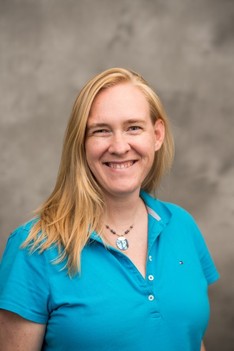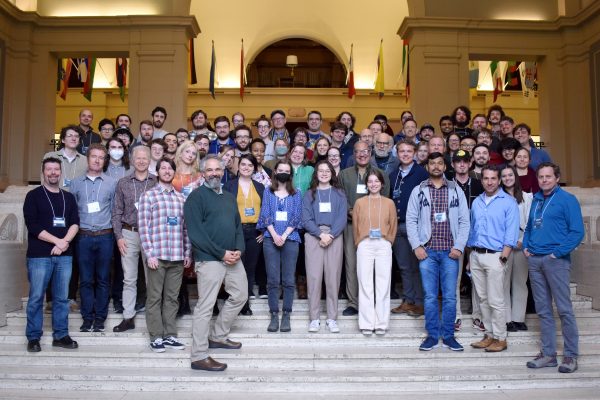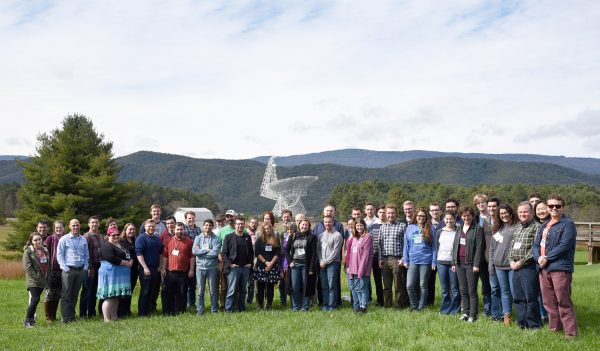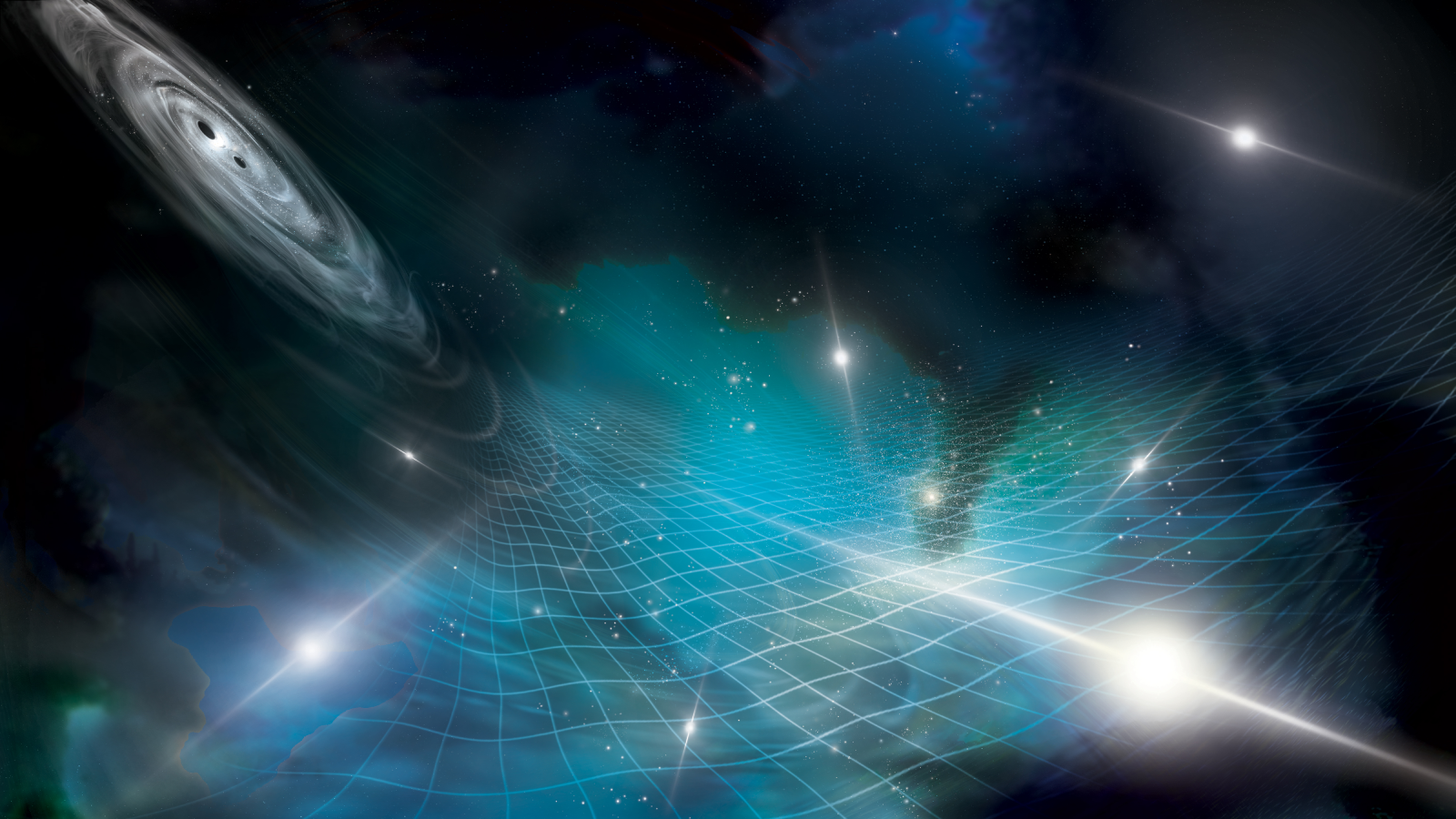Astrophysicists using large radio telescopes to observe a collection of cosmic clocks in our galaxy have found evidence for gravitational waves that oscillate with periods of years to decades, according to a set of papers published today in The Astrophysical Journal Letters. The gravitational-wave signal was observed in 15 years of data acquired by the North American Nanohertz Observatory for Gravitational Waves Physics Frontiers Center, a collaboration of more than 190 scientists from the U.S. and Canada who use pulsars to search for gravitational waves. International collaborations using telescopes in Europe, India, Australia and China have independently reported similar results.
While earlier results from NANOGrav uncovered an enigmatic timing signal common to all the pulsars they observed, it was too faint to reveal an origin. The 15-year data release demonstrates that the signal is consistent, with slowly undulating gravitational waves passing through our galaxy.

“This is key evidence for gravitational waves at very low frequencies,” said Assistant Professor of Physics and Astronomy Stephen Taylor, who co-led the search and is the current chair of the collaboration. “After years of work, NANOGrav is opening an entirely new window on the gravitational-wave universe.”
Unlike the fleeting, high-frequency gravitational waves seen by ground-based instruments like the Laser Interferometer Gravitational-Wave Observatory, this continuous low-frequency signal could be perceived only with a detector much larger than the Earth. To meet this need, astronomers turned our sector of the Milky Way galaxy into a huge gravitational-wave antenna by making use of exotic stars called pulsars. NANOGrav’s 15-year effort collected data from 68 pulsars to form a type of detector called a pulsar timing array.
A pulsar is the ultra-dense remnant of a massive star’s core after the star explodes in a supernova. Pulsars spin rapidly, their sweeping beams of radio waves appearing to “pulse” when seen from Earth. The fastest of these objects, called millisecond pulsars, spin hundreds of times each second. Their pulses are very stable, making them useful as precise cosmic timepieces.
Over 15 years of observations with the Arecibo Observatory in Puerto Rico, the Green Bank Telescope in West Virginia and the Very Large Array Radio Telescope in New Mexico, NANOGrav has gradually expanded the number of observed pulsars.
“Pulsars are actually very faint radio sources, so we require thousands of hours a year on the world’s largest telescopes to carry out this experiment,” said Maura McLaughlin, co-director of the NANOGrav PFC and an astrophysicist at West Virginia University. “These results are made possible through the National Science Foundation’s continued commitment to these exceptionally sensitive radio observatories.”
Einstein’s theory of general relativity predicts precisely how gravitational waves should affect pulsar signals. By stretching and squeezing the fabric of space, gravitational waves affect the timing of each pulse in a small but predictable way, delaying some and advancing others. These shifts are correlated for all pairs of pulsars in a way that depends on how far apart the two stars appear in the sky.
“The large number of pulsars used in the NANOGrav analysis has enabled us to see what we think are the first signs of the correlation pattern predicted by general relativity,” said Xavier Siemens, co-director of the NANOGrav PFC and an Oregon State University astrophysicist.
“My research group at Vanderbilt has made vital contributions to this work, including Vanderbilt Initiative in Data-Intensive Astrophysics postdoctoral fellows Nihan Pol and Maria Charisi and graduate students William Lamb, Polina Petrov, Kyle Gersbach and Levi Schult,” Taylor said. “My colleague Jessie Runnoe, assistant professor of physics and astronomy and NANOGrav member, contributed to the black hole astrophysics interpretation of our results. We also have a regular influx of very talented undergraduate students to help us with our work.”
Through the International Pulsar Timing Array consortium, regional collaborations work together to combine their data to better characterize the signal and search for new types of sources. “Our combined data will be much more powerful,” Taylor said. “We’re excited to discover what secrets they will reveal about our universe.”

NANOGrav’s most recent dataset shows growing evidence for gravitational waves with periods of years to decades. These waves could arise from binary black holes—orbiting pairs of the most massive black holes in the universe that are billions of times more massive than our sun, with sizes larger than the distance between the Earth and the sun. Future studies of these signals will open a new window on the gravitational-wave universe, providing insight into titanic black holes merging in the hearts of distant galaxies, among other exotic sources.
Taylor was the co-lead for the gravitational wave background paper and chaired the NANOGrav management team. The NANOGrav collaboration included 88 international institutions. Members included 125 undergraduate and 75 graduate students, as well as postdoctoral researchers, research scientists and university faculty.
“I joined as a scientist fresh out of my Ph.D. at Cambridge and was thrilled to connect with a vibrant group of scientists committed to an amazing mission,” Taylor said. “I’ve been able to complement my research contributions with leadership roles, first co-leading our Gravitational Wave Detection Working Group, then joining our management team and finally becoming collaboration chair at the start of this year. It’s certainly been a busy few months, but it’s been extraordinary to see everyone pull together in our common goal.”
“Stephen Taylor’s groundbreaking research on gravitational waves from supermassive black holes showcases Vanderbilt’s exceptional caliber of scientific inquiry. I wholeheartedly commend him for his remarkable achievements and exceptional leadership of the NANOGrav collaboration, funded by the National Science Foundation,” said C. Cybele Raver, provost and vice chancellor for academic affairs. “We take great pride in having him as a distinguished member of our faculty, and we celebrate his contributions to the field of astrophysics.”


The NSF has been vital to NANOGrav’s success, providing support for scientific work through the Physics Frontiers Center program and through access to multiple world-class radio telescopes. Future NANOGrav results will incorporate data from Canada’s CHIME telescope, which was added to the project in 2019.
“The NSF NANOGrav team created, in essence, a galaxy-wide detector revealing the gravitational waves that permeate our universe,” NSF Director Sethuraman Panchanathan said. “The collaboration involving research institutions across the U.S. shows that world-class scientific innovation can, should and does reach every part of our nation.”
Astrophysicists around the globe have been busy chasing this gravitational-wave signal. Several papers released today by the Parkes Pulsar Timing Array in Australia, the Chinese Pulsar Timing Array and the European Pulsar Timing Array/Indian Pulsar Timing Array report hints of the same signal in their data.
Through the International Pulsar Timing Array consortium, regional collaborations work together to combine their data to better characterize the signal and search for new types of sources. “Our combined data will be much more powerful,” Taylor said. “We’re excited to discover what secrets they will reveal about our universe.”
The NANOGrav collaboration receives support from NSF Physics Frontiers Center award Nos. 1430284 and 2020265, the Gordon and Betty Moore Foundation, NSF AccelNet award No. 2114721, a Natural Sciences and Engineering Research Council of Canada Discovery Grant and the Canadian Institute for Advanced Research. The Arecibo Observatory is a facility of the NSF operated under cooperative agreement (#AST-1744119) by the University of Central Florida in alliance with Universidad Ana G. Méndez and Yang Enterprises Inc. The Green Bank Observatory and the National Radio Astronomy Observatory are facilities of the NSF operated under cooperative agreements by Associated Universities Inc.



